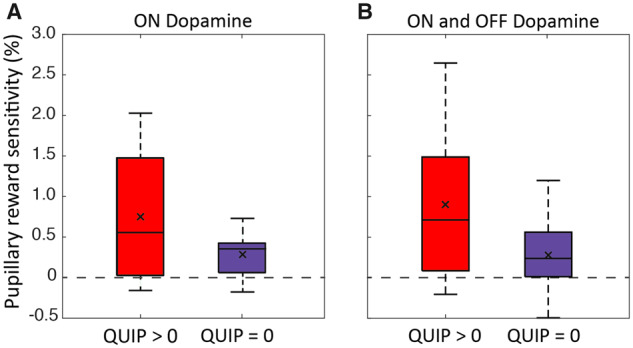Figure 4.

Pupil reward sensitivity in those who developed a QUIP score > 0. PD-no-ICD group split based on QUIP-anytime scores collected 4–5 years after behavioural testing with the eye tracking paradigm. (A) Mean pupillary reward sensitivity ON dopamine significantly greater in PD-no-ICD with QUIP > 0 compared to PD-no-ICD with QUIP = 0. (B) Mean overall pupillary reward sensitivity (ON and OFF dopamine combined) significantly greater in PD-no-ICD with QUIP > 0 compared to PD-no-ICD with QUIP = 0. The line within the box indicates the median; the ‘x’ within depicts the mean.
